Innovation
Transforming Human Experience: Top Takeaways from CES 2025
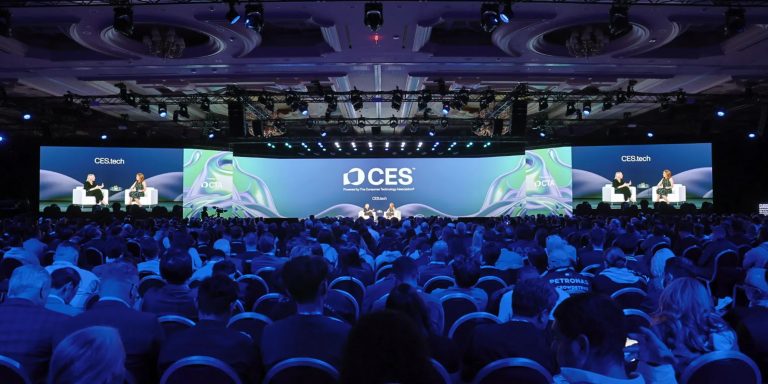
Key Points
- Broadband connectivity was a unifying undercurrent in many of the innovations on display at CES 2025 in Las Vegas. In this video, we explore some of the standout technology trends and solutions designed to improve the human experience.
CES has always been a hotspot for seeing what’s new and trending in the tech space, and CES 2025 was no exception. From the explosion of IoT devices in the home to wearable tech and remote health care, we saw innovation on display around every corner.
Walking the show floor, we saw the growing importance of the broadband network as a common thread running through all of these innovations. As online experiences drive expanded use of networks, the broadband industry will continue to need reliable infrastructures that can support new products, applications and technologies.
Most of the technologies we saw at this year’s show centered on creating better human experiences. Rather than emphasizing core technologies, companies are exploring ways to create differentiated experiences, new business models and strategic partnerships.
Watch the video below for top takeaways and a closer look at what we saw at CES 2025.

CES 2025 made clear that it’s no longer about the technology; it’s about the experience. It’s about real-world applications that can deliver real, meaningful impact for consumers — applications that are powered by our industry’s networks.
As part of our Technology Vision, CableLabs is working with our members and partners to ensure that broadband networks of the future can support mainstream adoption of new technologies like those we saw showcased at CES.
Innovation
The Power of Partnership: How Startups and Scaleups Help Advance Connectivity (Part 2)
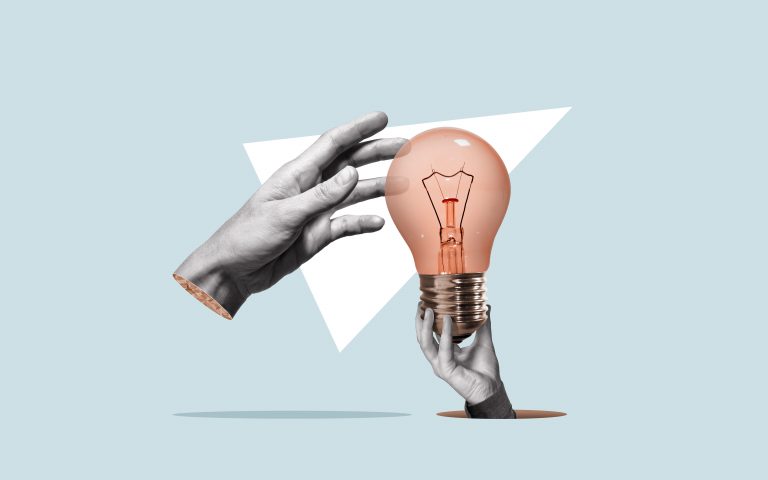
Key Points
- From simplifying complex data workflows to drone flight management, these emerging technology companies have the potential to transform the connectivity landscape. They were highlighted this year in CableLabs' neXus: New Partner Showcase.
- Charter and Vodafone DE are among the CableLabs members that are celebrating successes with rising innovators.
Today is the second and final part of the recap of my SCTE TechExpo24 event, neXus: New Partner Showcase coverage. In Part 1, I highlighted some emerging and up-and-coming companies that are poised to drive growth, innovation and transformation in our industry. Today, I am sharing the final groups that I featured this fall:
- Charter shared their partnership with BugLabs to discuss the power of Low-Code/No-Code, simplifying onboarding and minimizing development for Network as a Service (NaaS) deployment.
- Vodafone Germany featured their recent collaboration with Flynex and Dimetor to develop DroNet Hub an innovative online platform designed to streamline the planning and management of commercial drone flights for businesses.
Bug Labs and Charter
Charter and Bug Labs announced their new partnership on stage at SCTE TechExpo24, which coincided with Charter’s launch of Bryte IQ. Bryte IQ is a B2B NaaS platform that exposes APIs and functionality to third-party developers to help integrate and create amazing experiences for customers. This enables seamless, consistent deployment of services across wired and wireless networks, which empowers fast, versatile application advancement and adoption.
Within the United States, there are over 33 million businesses. There are around 130 million full-time employees, with 77 percent of those employees working in businesses with fewer than 500 people. The capital prioritization faced by most companies of this size makes it challenging to have many developers on staff.
Charter and Bug Labs, with Bug Labs’ Signalpattern platform, are committed to improving user productivity and agility through software solutions that simplify access to network information.
Peter Semmelhack, founder and CEO of Bug Labs, stated, “In today’s dynamic technology landscape, Signalpattern presents a transformative alternative to traditional application development. By offering discrete, modular workflows that can be accessed independently or in combination, via any interface type — web, chat, audio — Signalpattern reimagines information flow, enabling companies to lower costs and boost operational efficiency."
Signalpattern supports all popular workflow applications, from dashboards to Slack, Teams and even SMS, making it adaptable and easy to use. Users can create personalized visualizations and interactions, seamlessly share them, and access a library of ready-to-use, interactive widgets. This approach accelerates development while ensuring solutions are customized to meet users’ unique needs.
Working together, Charter and Bug Labs are providing end users with tools to quickly and efficiently create and personalize their own solutions, supporting the emerging "composable enterprise" model, where agility and responsiveness are essential for staying competitive. They aim to remove obstacles for users, making the information they need accessible anytime, on any device.
By year end, Bug Labs will introduce a new suite of AI-driven features that enable users to input their job context, role and industry. Signalpattern will then automatically generate interactive visualizations and intuitive user interfaces tailored to their specific needs, further streamlining the creation of customized solutions. These new capabilities allow users to save time, reduce dependency on technical teams and quickly adapt insights for their unique business environments. By simplifying complex data interactions, Signalpattern empowers professionals to make informed decisions faster, boosting productivity and enabling more agile responses to business challenges.
Vodafone DE, FlyNex and Dimetor
Vodafone DE (Germany) in Düsseldorf is working to constantly innovate and find new revenue streams (Beyond Connectivity Solutions) using an open innovation approach. For Michael Reinartz, director of innovation at Vodafone DE, the key to successful innovation is curiosity and openness, on top of a lot of research, trend-watching and analyses.
While they have autonomy in Germany to do their own innovation work, a larger goal is to take the solutions to Vodafone Group in the United Kingdom to serve their other markets.
Michael leads their team of 40 people who focus on the areas of extended reality (XR), data analytics, sustainability, payment/identity/messaging, network-driven innovations, content solutions and drones. They have successfully launched products and services in many of these areas on their own as well as with specialized partners, who are often startups and scaleups. When that additional knowledge and flexibility is required, their department’s cooperation initiative called “UPLIFT” scouts for relevant startups and scaleups that can help solve the problems of their customers — both B2C and B2B.
A recent example of this co-creation is in the drone space, where the flight planning, regulatory compliance, and data analysis is quite complex for companies — and even regulators — to navigate. (It should be noted that operators, drone pilots and regulators are working on a joint regulatory and compliance base with the EASA (European Union Aviation Safety Agency).
Furthermore, BVLOS (beyond the visual line of sight) is becoming a driving force for the commercial drone market, and mobile connectivity plays a central role for the implementation and commercialization of BVLOS flights.
Imagine a railway company that needs to check their tracks after a big storm or disaster. Or a pilot that needs to check on a remote construction site or bridge, for example, to monitor the status. Or the large wind farms, electricity pylons and industrial plants that require complex inspection and maintenance. Currently, people physically go to these locations to perform this work. This is inefficient, costly, not always possible and slows down the progress that needs to be made in repairing the situation. Other use cases include emergency package delivery, first responder reconnaissance, infrastructure surveys and many more.
Vodafone DE wanted to offer their drone-interested B2B customers a user-friendly platform to plan, execute and analyze their drone flights with ease. Together with companies they pinpointed, FlyNex and Dimetor, Vodafone DE announced their drone offering to business customers, DroNet Hub, DroNet API, and DroNet Connect, earlier this year.
This cloud-based solution can be customized for B2B companies, leveraging the expertise of Vodafone DE’s two partners and their own network capabilities:
Dimetor and the DroNet API
Vodafone DE tapped into Austrian-based Dimetor for the DroNet API. Headed up by Thomas Neubauer and Thomas Wana, Dimetor brings years of experience in aviation, mobile networking and software engineering to deliver highly scalable software to streamline the flight planning and control processes for UAV (unmanned aerial vehicle) operations. The DroNet API gathers connectivity prediction and population density data on the ground and sends to the DroNet Hub to allow speedy approval of drone flight schedules.
Vodafone DE and DroNet Connect
Vodafone offers a mobile connectivity plan that ensures drones stay connected for the entire flight and through Vodafone’s 5G network, density and connectivity predictions function as an enabler for the drone solutions.
FlyNex.io and the DroNet Hub
To pull it all together for the DroNet Hub, Vodafone used FlyNex out of Leipzig, Germany, which specializes in digital data collection, analysis and management. They created one platform to manage the complete drone mission process. Headed up by three drone experts and one geoscientist (Andreas Dunsch, Christian Caballero, Michael Petrosjan and Holger Dirkson), FlyNex’s technology analyzes the aerial imagery taken by the drones and monitors them using AI, enabling the quick generation of automated reports and the creation of 3D models or digital twins of monitored areas. This informs the platform in real-time if there are risks that need to be addressed, like breaks in the tracks on a railway or damage to windmill turbines, for example.
The introduction of DroNet Hub marks a pivotal moment in accelerating the use of drone technology across businesses in Germany. This partnership not only highlights the ingenuity of the FlyNex and Dimetor, but also the innovative mindset and commitment of Vodafone DE in creating Beyond Connectivity Solutions for their customers.
Innovation
The Power of Partnership: How Startups and Scaleups Help Advance Connectivity (Part 1)
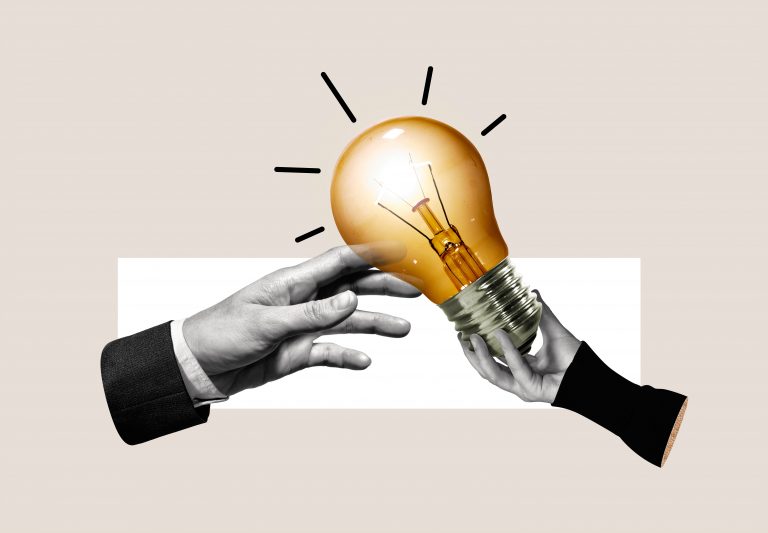
Key Points
- From AI-driven data insights to AI for frontline workers, these emerging technology companies — highlighted in CableLabs' neXus: New Partner Showcase — have the potential to transform the connectivity landscape.
- CableLabs members like Mediacom, Charter and Vodafone Germany are excited to share their recent successes partnering with these up-and-coming innovators.
Industries across the world have an interest in working with startups and scaleups for a variety of reasons. Younger companies setting out to improve or revolutionize ecosystems bring fresh perspectives, innovative ideas and disruptive technologies that can help established corporations stay competitive, adapt to changing markets and drive innovation within their own organizations. Additionally, newer companies are typically more agile and flexible than larger corporations, allowing them to respond quickly to changes in the market, which can be a huge asset when partnering with our industry.
As the head of Technology Outreach at CableLabs, I am constantly on the hunt for emerging tech companies around the globe that are looking to create change in the connectivity landscape. My mission is to build meaningful bridges between our Technology Vision for the industry, our member operators and external tech communities.
Whether your interest is in partnership, investing, acquisition, trend-watching or deeper collaboration, the companies I will spotlight in this two-part blog series are sure to spark your interest.
This fall, I hosted a session called neXus: New Partner Showcase in person at SCTE TechExpo in Atlanta and virtually to my UpRamp Community. The session highlighted the intersection of new partner technology and our member operators’ offerings. The startups and scaleups I featured have the potential to drive growth, innovation and transformation in our industry.
- Mediacom joined the stage with Aispire to discuss how they are unlocking the power of customer and network data to build a foundation for AI/ML applications.
- Frontline worker AI company Anthill highlighted how they help use AI with company data through a no-code platform built for non-technical experts, elevating the work of humans for the AI era.
Aispire.ai and Mediacom
Like many operators, Mediacom has challenges with siloed tools and data. While effective individually, their tools are focused on specific aspects of the network, making it difficult to see the bigger picture.
This is where Mediacom’s partnership with Aispire.ai comes in, providing a comprehensive solution that integrates all these tools and data into a cohesive system. Aispire's Network Intelligence Suite offers network-wide visibility, from individual subscribers to the entire network, using standard protocols. The system is non-invasive and can be added to any operator network. The first goal is to gather data (flow, BGP, SNMP, DNS, operator tags) and correlate it to provide insights and perspectives. From there, Aispire can apply analytics including AI/ML workloads for deep analysis.
The key features and use cases:
- Subscriber Insights understands consumption by subscriber grouping, service and where that traffic is entering the network from a peering perspective. For example, during a recent Peacock TV live-streaming event, Aispire’s tools helped Mediacom track and analyze the data with ease and speed, providing a comprehensive view of the network's performance in near real time.
- Peering Insights pulls data from peering routers and correlates it on a per-router, per-peer basis. This helps Mediacom understand traffic patterns and consumption, and even identify issues like unusual drops and spikes on specific routers, individual peers or overall on a service-by-service basis. It also identified target equipment where engineers were able to narrow to an IOS issue. Peering Insights helps operators quickly see what is entering the network from a free or paid perspective and if free peering is taking a more costly route, reducing OpEx.
- Security Insights provides visibility into traffic entering the network and allows for ad hoc reporting on any layer 3 or layer 4 conversation, including being able to identify subscribers involved in residential proxy events.
- Video Insights helps Mediacom with their IPTV rollout by analyzing bandwidth usage and predicting future needs, ensuring that all customers have the same experience.
- Performance Insights finally answers the questions: Is it the customer's problem? The content provider’s problem? Our problem?
Overall, the partnership between Mediacom and Aispire integrates and correlates data from various sources to provide a comprehensive view of the network. This enables Mediacom to address current challenges and prepare for future AI/ML workloads, ultimately identifying performance issues before they impact customers and improving network performance.
The best part? This work paves the way for an incredibly improved customer experience, churn reduction and the customer centricity of the platform maximizes the customer lifetime value. It’s a win-win-win.
To learn more, visit www.aispire.ai or email evan.davis@aispire.ai.
Anthill.co
Anthill is an automation platform designed for the frontline workforce to simplify recruiting, onboarding, training and retention. I met the co-founder, Muriel Clauson-Closs, when I attended Singularity University last April. She gave a talk on the future of work that blew me away. For example, did you know that deskless professions make up over 80 percent of the current workforce and that it is overrepresented by workers over 55? This struck me as I know some of our operators are struggling with losing some of their best talent in the field due to retirements.
Muriel really challenged everyone there on whether we are asking the right questions about AI in the workforce.
Muriel is from Alaska and, growing up, most of the people she knew were working in frontline jobs and out in the field. During the COVID-19 pandemic, we all realized the critical role these workers play, something that Muriel had known for years due to the Ph.D. work she had been doing in this space. She identified an unmet need in the technology advances that knowledge workers get but saw that the frontline workers were being left out. And this is how Anthill was created.
Muriel pointed out a significant population shift expected by 2030, with a projected addition of 12 million new jobs in the United States — but only 1.4 million people available to fill them. This shortage is compounded by the rapid change in required skills due to advancements in AI. Anthill helps organizations manage this by scaling best practices in workforce management through automation.
Anthill's platform offers five key benefits:
- Efficient management of the frontline workforce
- Hiring and managing non-English speakers
- Increasing retention rates
- Improving safety and compliance
- Gaining insights from frontline interactions
The platform is built with responsible AI, ensuring data safety and human-in-the-loop review, making it accessible even to non-technologists.
And, as I mentioned above, very relevant to the problems we are seeing with some of our operators, Muriel also shared how Anthill supports companies with an aging field operations workforce. Many industries face this challenge, with the average age of field workers being 56. Anthill's workflow automations include exit interviews to capture valuable experience and knowledge from departing employees. This data is then used to create training content for new workers, providing them with a virtual expert to consult in real time.
Additionally, Anthill adapts to the needs of Gen Z workers, who expect more communication and answers to their questions, by implementing supportive automations.
Anthill's impact is evident in its work with call centers, where they have seen more than 10 percent improved retention rates and reduced management staffing needs by 10 times. They are now looking to partner with the broadband industry to bring these benefits to a new sector.
You can learn more at www.anthill.co and get in touch with them at partnership@anthill.co.
I will be featuring the remaining companies in another blog post this week. Come back to learn about what Vodafone Germany is doing with FlyNex and Dimetor with commercial drone flights and what Charter has cooked up with Bug Labs as part of their Network as a Service (NaaS) deployment.
If you’re an operator working with or investing in an interesting startup, scaleup or a new company from adjacent ecosystems, I would love to hear from you. Please contact me using the button below.
Innovation
How Patent Licensing Advances Innovation
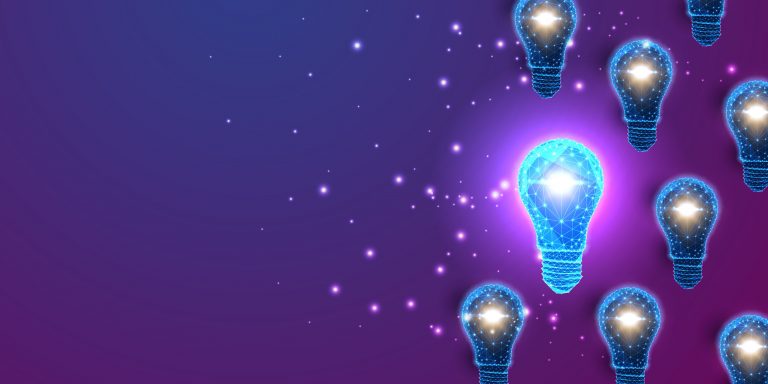
Key Points
- Licensing agreements help incentivize innovation in the broadband industry by enabling collaboration and technology transfer.
- CableLabs’ patented technologies are available for our member operators to use at any time.
- Licensing reduces the litigation risk for manufacturers and other vendors who contribute to CableLabs’ work.
At CableLabs, we talk a lot about the importance of innovation and collaboration. These are the connecting themes in our Technology Vision for the broadband industry to drive competitiveness, scale and alignment while also cultivating technologies for the future.
But there’s another critical piece of the puzzle that comes into play when we talk about the industry’s collective advancements: intellectual property. Specifically, the licensing of patents and software — and how these creative safeguards move broadband technology forward by incentivizing innovation.
Why Are Patents Important?
Patents are a pillar of innovation in tech. They give inventors rights to their creations, allowing them to protect their hard-earned ideas in exchange for sharing the details of their invention with the world and pushing the boundaries of public knowledge. And during the patent protection period, a patent license allows other innovators to create and even build on the original invention. This allows technology to evolve and spark new ideas, even before the patent period ends.
Once the patent's protection runs out, the invention becomes public domain, meaning anyone can use or improve on it freely, fueling further progress. It's a win-win, keeping innovation moving forward!
It’s no surprise that the broadband industry is rife with patents. In fact, as of today, the CableLabs patent portfolio includes more than 850 issued and allowed U.S. patents and 97 foreign-issued patents.
Why Is Licensing Important?
Most standards and specifications carry an associated patent licensing requirement. This means that if you agree to work on and contribute to a specification, you also agree to license your patents that are essential for the specification’s implementation.
Licensing agreements prevent parties from incorporating their patented technology into a specification and later withholding or over-leveraging patent rights against a manufacturer that wants to build products that implement the specification. This is sometimes called patent hold-up, or a patent hold-out.
Adhering to a patent licensing policy establishes a nurturing environment that fosters collaboration, advances development and unifies goals in the industry to ensure the cooperation and interoperability that are critical to innovation advancements. It’s one of the reasons DOCSIS®️ technology was such a success and rapidly adopted, and why it continues to benefit the industry.
Further, in addition to licensing regimes created for specification development, patents and licensing play a pivotal role in broadband technology development more generally, helping industry players navigate a complex legal landscape while contributing to a stronger, healthier ecosystem and ensuring vendor neutrality.
Focusing on the future, CableLabs develops technologies and demonstrates proof-of-concept for innovations that will provide value to our members through an innovation lens that usually targets an impact eight to 10 years out. Developed to benefit the industry as a whole, CableLabs’ patented technologies are available for our member operators to leverage at any time.
Since our first intellectual property license in 1998, CableLabs has made it a tenet of our mission to enable the vendor ecosystem to deliver interoperable, competitive solutions. Licensing also reduces the litigation risk for vendors who contribute to the work we do.
Gridmetrics Available for Licensing
Gridmetrics, which evolved from a project incubated at CableLabs, uses existing broadband infrastructure to deliver actionable insights about the state of power in the last mile of the distribution grid. By providing an out-of-band measurement of the quality and consistency of the power grid, Gridmetrics data can be leveraged for outage detection, power restoration, grid safety and voltage variability.
Gridmetrics is now on a path to expanding its market reach. CableLabs’ research is complete, and licensing of the technology’s intellectual property is available.
Contact us using the button below to discuss licensing opportunities and learn how to join us in our work to achieve this vision for the industry. We’re excited to help put CableLabs’ technologies to work for you!
Innovation
How NeRF Technology Is Creating the Next Generation of Media
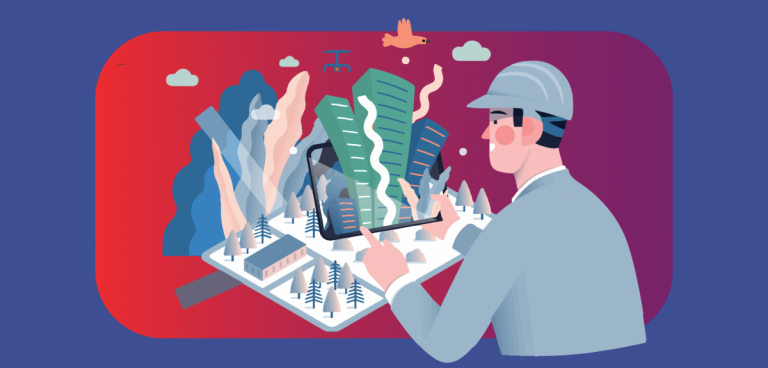
The ways we create and consume visual media are constantly evolving, allowing us to experience places and things as if we’re physically present in those environments. Today, thanks to a fast-growing technology called a Neural Radiance Field ("NeRF"), anyone with a regular camera can make and share "3D photographs" of the real world. NeRFs have been around since the 2020 publication of Representing Scenes as Neural Radiance Fields for View Synthesis, but recent developments have made it easier than ever to start making immersive 3D media.
If you’ve ever viewed a 3D house tour or a 3D piece of furniture on an e-commerce website, you might be wondering: What makes NeRF unique? The answer is that NeRF introduces unprecedented photorealistic detail, including the ability to see reflections and transparencies like never before. You can see an example of NeRF in this capture created by our intern, Tyler McCormick:
NeRF makes high-quality 3D content creation fast and intuitive. CableLabs' Immersive Media Experiences team has been following the developments surrounding NeRF and other forms of immersive media to understand how these technologies transform the ways we live, learn, work and play. In time, immersive applications may emerge as major drivers of network traffic, so we’re working to understand the resources required to deliver these next-generation experiences.
In this blog post, we take a look at how NeRF works, how to use it yourself and how it’s influencing the future of immersive media.
NeRF in a Nutshell: How It Works
Essentially, NeRF is a machine learning system that takes photos or videos of a subject and memorizes the appearance of that subject in 3D. The NeRF-creation process looks something like this:
- Record a regular video or take a set of photos of your subject. Your phone will do!
- Take each of those images and figure out their positions relative to each other. You can do this with sensors fixed to the camera or, more easily, with an AI pipeline such as COLMAP.
- Train a multi-layer perceptron (a kind of neural network) to behave like a renderer that’s specialized at producing images of this subject.
- Now, you have a NeRF! You can use this neural network to create new images and videos of your subject, as in the above example.
When NeRF was first published in 2020, this creation process took hours. Today, advancements such as NVIDIA’s Instant Neural Graphics Primitives have brought the time down to the order of minutes or even seconds!
When we called NeRF a “3D photograph” earlier, we meant it. Essentially, a NeRF tries to describe the color and density of light emitted at each point in a 3D space. If you look at the same point of a real object from various angles, you might see different colors and densities. NeRF reproduces this effect to achieve reflections and transparencies, just as if you were viewing a real 3D object.
The NeRF process results in a high level of detail, but there’s one catch: The NeRF model assumes that you’re working with a still, unchanging scene. Light-based effects are “baked in,” meaning that you can’t add new objects to the scene and see them cast shadows or appear in reflections. If subjects move or change over time in the input video, the NeRF output will appear blurry or misshapen. New research papers have identified ways around these limitations, but those solutions haven’t yet reached wider adoption. In the meantime, anyone want to bring back the Mannequin Challenge?
Getting Started
It’s easy to start playing with NeRF. For example, Luma AI has built an app for iPhones and the web that automatically builds NeRFs from your videos. Once you have a NeRF, you can make videos and export them to other content-creation tools, including the Unreal game engine. Luma has a gallery of diverse NeRF-based content submitted by their users here.
If you want to take a more hands-on approach to NeRF creation, nerfstudio is a free, open-source toolset for creating NeRFs and designing advanced 3D graphics pipelines with the new technology. The learning curve is steeper, but power users and developers may enjoy the increased flexibility that this method offers.
NeRF and Next-Generation Media
Improved 3D capture of real-world subjects opens up opportunities across multiple industries. Here are a few examples.
Digital productions and VFX artists are already finding ways to incorporate NeRF into creative workflows. The most obvious use in content creation is converting real-world subjects to 3D representations that can be combined with synthetic content, but NeRF can also be used to smooth camera movements or compose multiple camera shots into unified sequences. To see for yourself, check out this Corridor Crew video on YouTube and this McDonald’s commercial about the Chinese New Year (including the additional behind-the-scenes content in the replies).
Digital twins and simulations, as described by platforms like NVIDIA Omniverse, have presented a compelling value proposition for accurate digital modeling of real-world systems such as factories and autonomous vehicles. Where applicable, NeRF may be an effective way to digitize real-world environments for use in models and simulations. One example in the wild is Wayve Technologies’ effort to build city-scale NeRFs for autonomous vehicle simulations, as presented at NVIDIA GTC 2023.
Finally, metaverse initiatives often aim to empower users to build and share their own content and experiences. Games like Minecraft and Roblox provide user-friendly content-creation tools, but photorealistic content creation is usually reserved for experts with training on professional tools or access to specialized photogrammetry software. Now, cloud-hosted apps like Luma and nerfstudio make it possible to generate photorealistic content in minutes with your smartphone and a network connection.
NeRF Is Accelerating Immersive Media
Immersive media comes in many forms, including but not limited to virtual reality, augmented reality, mixed reality and light field displays. NeRF alone isn’t going to make or break any of these technologies as they continue to mature and enter the market, but it gives creators and developers another tool to get one step closer to a photorealistic holographic immersive experience.
In the past, we’ve asked readers to imagine that we had a way to capture life-like holograms of subjects. Thanks to NeRF and related technologies, there's no need for make-believe. Subscribe to our blog for more updates from the Immersive Media Team and other activities at CableLabs.

Innovation
From Inspiration to Pitch: How Innovation Boot Camp Launched the Idea for ARC HotSpot
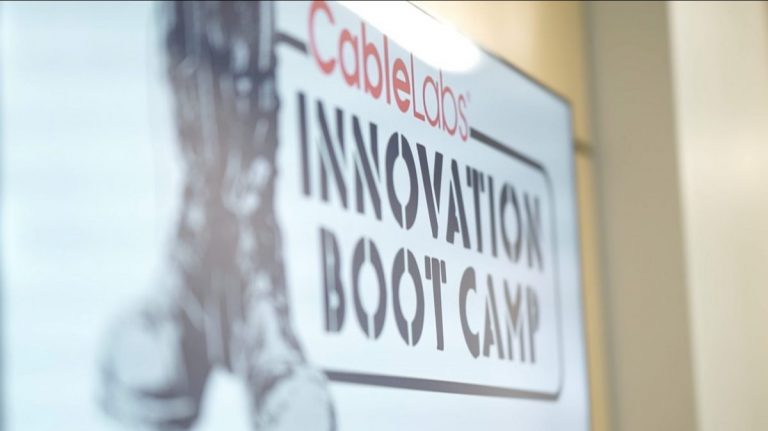
Innovation isn’t just about creating new products. It’s about bringing together diverse thoughts, perspectives and experiences to solve big problems. At Innovation Boot Camp, CableLabs members and employees work together in an intimidation-free zone to immerse themselves in the innovative process, from inspiration to final pitch.
During the week of April 24–28, 2023, CableLabs will host the 20th Innovation Boot Camp, where innovators will receive hands-on experience and live coaching from CableLabs CEO Phil McKinney and other expert speakers and coaches. In this spring’s all-virtual format, participants will learn the FIRE framework (Focus, Ideation, Ranking, and Execution), experience the innovation process end to end; and learn strategies that they can apply to their own teams and projects immediately.
It’s an inspiring environment designed to bring the industry closer together and share new ways of creating and innovating.
But do any of the ideas developed at Innovation Boot Camp actually make it to market? Yes, they do.
A Market-Ready Solution to a Real-World Problem
Innovation Boot Camp pulls out all the stops to help participants tackle real issues that they’re facing in their businesses or other contexts. The innovative process we teach is designed to generate ideas that result in viable solutions, many of which have gone on to production.
One of those ideas was Kyrio’s ARC HotSpot, a technology that delivers automated failover for broadband networks. The idea for ARC HotSpot was born out of the 2020 Innovation Boot Camp, which took place during the COVID-19 pandemic, when companies urgently needed reliable remote-work solutions. By holding the very first virtual Innovation Boot Camp in the midst of this new world of work, CableLabs gave participants an opportunity to collaborate and innovate despite lockdown restrictions.
The challenge of the 2020 Innovation Boot Camp was to come up with a technology idea that would make working from home a better experience. Participants learned from veteran coaches, then broke into teams to begin the ideation process. One of those teams was Team Echo, which consisted of CableLabs employees from various backgrounds and areas of expertise, including CableLabs’ Director of Procurement Zen Mykytyn.
During a brainstorming session, Zen observed that one of the most difficult challenges of navigating virtual work and school was keeping everyone connected during a service outage. With two parents working from home and kids logged in to Zoom classrooms, even a short outage resulted in house-wide panic as meetings were disrupted and no one could do their work.
But what if there was a technology that could solve that problem?
Zen’s observation was the spark that launched a week of brainstorming, iterating, investigating and developing the idea that eventually became ARC HotSpot.
From Inspiration to Pitch
With the idea in hand, Zen and the other members of Team Echo started developing a solution. Coached by John Bahr, the team came up with the idea of using a smartphone as a hotspot for the entire home network. They conducted a live customer experience conversation to get real feedback on the idea, put together a one-sheet and a storyboard, and developed a pitch that they would present to the Innovation Boot Camp panel at the end of the week.
“CableLabs’ Innovation Boot Camp, while a fun learning experience, is also a place where game-changing ideas happen,” said coach John Bahr. “My team came up with a solution to a problem that was at the forefront of real customers’ minds during the height of the COVID-19 lockdown. Executing on that solution to turn it into a real product was just so cool!”
At the end of the week, Team Echo pitched their idea over Zoom. Just a few short minutes after Zen began presenting, his connection dropped. One of the other team members picked up the pitch as everyone waited for Zen to re-establish his connection. It was a brilliant, planned demonstration of the exact use case that made the team’s idea so relevant, and the panel agreed it was an idea worth pursuing.
After Innovation Boot Camp ended, John Bahr gave a demonstration that generated significant interest. Kyrio non-exclusively licensed the intellectual property from CableLabs and developed its own implementation, and ARC HotSpot was born.
Innovation Is a Team Sport
Zen strongly believes that the positive, nurturing environment of Innovation Boot Camp and the diversity of the team made it possible for his idea to come to fruition.
“My team included John Bahr, Greg White and Mark Bridges,” he said. “They’re all really smart guys and experts in their fields, but they’re all different. My field isn’t technical thinking or awareness, but working with them gave me a glimpse into what they do every day and how they think. My idea wouldn’t have come to be without the rest of the team.”
That diversity of experience lies at the heart of Innovation Boot Camp’s mission. We believe that great ideas can come from anywhere—and they do. Innovation is a team sport that thrives when diverse thinkers come together in an intimidation-free environment to make things better.
If you’re looking for a hands-on experience that puts words and ideas into action, Innovation Boot Camp is ideal for you. You’ll learn to challenge your thinking, develop new skills and put those skills into action as you work with a team of other innovators.
Ready to see what it’s all about? Join us for the next CableLabs Innovation Boot Camp. Spots are limited, and innovation topics do vary.


Innovation
Step Inside the Future: Experience Exhilarating Virtual Worlds with Immersive Technology

How we experience the digital world is about to get a whole lot more exciting. The newest film in the “Near Future” series shows what a day in the life of a family looks like as technology transforms how they work, study and engage with each other. Imagine interacting with virtual people and places that feel real and propel you into new worlds. This is the future that the “Step Inside” film explores—and it’s not that far off.
Immersive Media
In the film, a virtual 3D talking rabbit and a lifelike prowling tiger enhance the children’s learning and play through an immersive experience. With holographic and light field technologies, characters come to life with realistic depth and presence so that the family can interact with them.
Light Field Displays
Imagine 3D displays that don’t require special glasses or headsets. This is what the main character, Clara, experiences when she’s in the meeting with her investors and they can exchange glances. With light field technology, multiple people can view the same thing at the same time using displays on walls, tabletops or even entire stage floors.
Holographic Telepresence
As Clara is briefed on a developing hurricane, she and her remote team can observe the storm’s pathway simultaneously via a life-size holographic projection. Holographic telepresence technology allows multiple users to experience the same three-dimensional media at the same time and from different angles. Clara also presents remotely to her board members as if they are all in the same room together. With holographic telepresence, it’s easier to build bonds and create deeper connections. These holograms are three-dimensional images formed by the interference of light beams from lasers or other light sources.
Advanced AI Avatars
In the film, Clara’s assistant helps her prepare for her presentation and also sees she’s nervous and provides her with guidance to calm her. AI avatars are digital representations of a human in a virtual setting powered by artificial intelligence. These avatars can take the form of a multitude of personas that are capable of authentic, human-like communication and designed to educate, guide and entertain us.
AR Smart Glasses
Ben and Clara take their avatars on the go with technologically sophisticated glasses that look like the eyewear many of us wear today. The difference? AR smart glasses will bridge our real-world experiences with our digital lives. Instead of head-mounted displays (HMDs), the sleek smart glasses of the future will allow us to interact with digital objects and information overlays directly within our field of vision.
Quantum Computing
Clara is with her team watching the developing hurricane. Quantum computing is powering the highly detailed storm analytics. In Clara’s case, this technology reroutes the ships, potentially saving lives and the business. With quantum, computers can simulate complex scenarios and optimize advantageous outcomes faster than classical computers.
What’s Next?
Each of these innovations is already in development, paving the way for our next-generation experiences. CableLabs is at the forefront of what’s new and next, innovating today for the broadband of tomorrow.

Innovation
2023 Technology Predictions
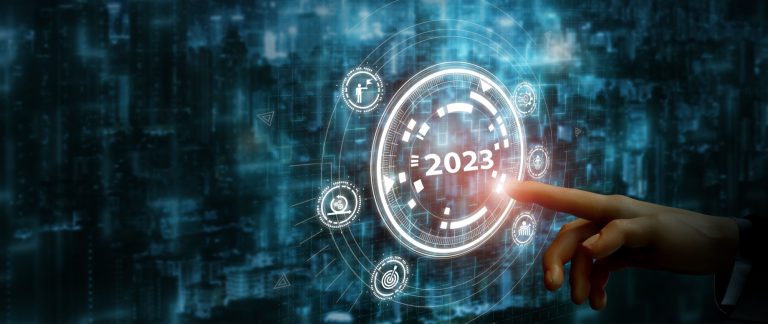
Technology impacts us in every way, touching our lives, businesses and communities. Over the last few years, we’ve experienced a major transformation in how we work and collaborate, which has introduced many benefits and challenges. But with adversity comes opportunity and innovation.
Some of the problems this year’s technology predictions aim to solve are an increased need for remote collaboration, flexible and efficient transportation, personalized technology and secure networks. The possibilities lying ahead are nearly limitless, and our annual tech predictions envision the development of technologies that will define our future.
Remote Work Becomes Serendipitous
We’ve increasingly become a culture that values the flexibility to work from anywhere. For many of us, that means working remotely or at least working in a hybrid environment. New technologies are enabling us to connect in serendipitous ways, leading to meaningful, chance encounters at the right place and time—like when we bump into a colleague in the hallway and the interaction sparks a new idea.
Now, cutting-edge technologies like virtual reality, holograms and smart glasses will transport us into augmented or virtual reality environments that feel real. These new technologies offer us flexibility and opportunities to connect in new ways, making remote work more collaborative. Other benefits include faster training and onboarding, and the need for less physical office space. These augmented and virtual reality innovations may even lead to increased happiness at work.
Autonomous Vehicles Revolutionize Transportation
Buckle up. We’re on the brink of a transportation revolution.
Autonomous vehicles are about to change the way we get around. Today, we understand that autonomous vehicles drive themselves without any intervention by humans other than them defining the destination. The trend toward safer, sustainable and possibly more equitable transportation systems is evolving.
Autonomous vehicles will contribute to lives saved, reduced traffic congestion and less pollution. An economic impact will be felt, too, with autonomous vehicles popular among those who don’t have a driver’s license or who live in areas with poor public transportation options.
It’s not a matter of if this new technology will be integrated into our transportation system—it’s a matter of how and when.
AI Becomes Personal
Artificial intelligence is here to stay and getting smarter every day. As a result, we can expect to see growth in AI as a personal aid in creativity and in health and wellness.
AI has evolved to be easily accessible in a variety of ways, especially because many tools are now open-source. Your favorite apps may even be powered by some form of AI-augmented tools to assist art and music creators. With this increased accessibility, AI has transformed health care for drug development, robotic surgery and telemedicine. As more data is collected and moved to the cloud, we’ll see more personalized services, including smart nurse bots, online health coaches and remote care assistance.
This increased accessibility to health care will be especially beneficial in rural areas and developing countries, and more self-service options will allow people to take better control of their health.
Quantum Networks Become Tangible
Quantum networks are the next step in secure communications. Bolstered by the promise of near-zero latency, elimination of physical network infrastructure and unhackable communications, quantum networks will make it possible to detect with certainty when communications have been intercepted. The networks use quantum phenomena such as superposition, no-cloning and entanglement that are not available in today’s broadband and wireless networks.
Research and investment in quantum networks are already accelerating as companies and governments around the world set up research labs to build large-scale quantum networks. This growth is paving the way for practical applications of the technology to transmit sensitive data and communications.
Defining Our Future
Whether transforming the future of work, enhancing transportation systems, augmenting our creativity or improving communications, technological advancements are addressing some of the most pressing issues of our time. I believe we’ll see some fantastic projects and products launched in 2023. Watch my video below to learn more about these technology predictions.


Innovation
10G and Immersive Media Experiences
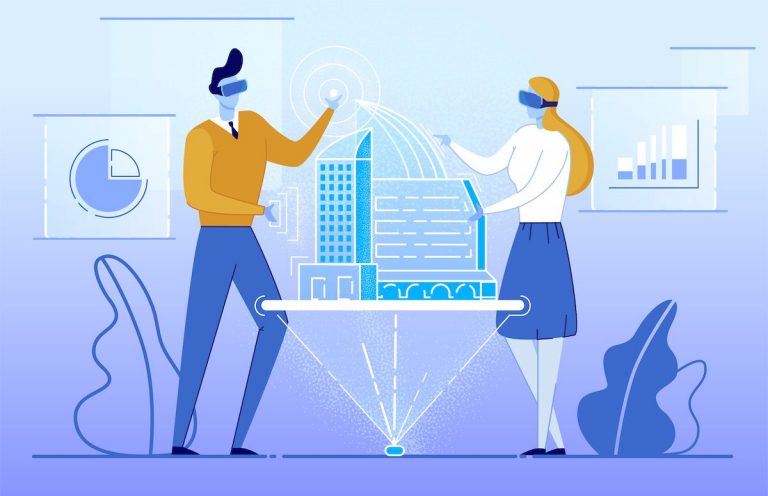
Imagine if you could create a life-like hologram of a given subject—and then be able to study and experience every detail of that subject later without being physically near it. Sounds like science fiction, right? We’re living in an era when such futuristic technology is already available to us! To make this kind of experience a reality, we can capture the rays of light that bounce off a particular subject, and what makes this possible is “light field media.”
CableLabs’ Immersive Media Experiences team has been researching the ways that light fields can transform the ways we live, learn, work and play. Today, there are already many ways to capture light fields, ranging from the latest smartphone cameras to professional light stage studios that capture the tiniest of details. To view a light field, the latest holographic displays provide high-resolution 3D video without the necessity of headwear or face tracking. Experiencing this technology in person feels like magic!
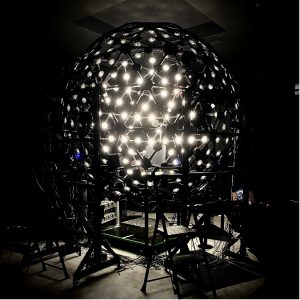
OTOY’s LightStage
How 10G Will Deliver an Immersive Future
10G will bring unprecedented speed, reliability and security to the world, which is why it’s essential for enabling light field media. Light fields require tremendous amounts of data—more than any other technology that currently exists. Traditional photographs and videos store only a grid of pixels, whereas light fields track exponentially more light rays of colors and directions. Although the ecosystem continues to evolve and reach more people, the cable industry is also preparing to deliver these immersive experiences over the network.
As part of our strategy to support the emergence of immersive media, CableLabs is a contributing member of the Immersive Digital Experiences Alliance (IDEA), a collaboration between diverse experts across immersive media technologies. IDEA is producing royalty-free specifications that enable standardized end-to-end conveyance of immersive media. These standards will make it possible to create, distribute and enjoy immersive content as the landscape grows richer over time.

From CableLabs’ Near Future series
Watch our 10G and immersive media experiences video, in which the Immersive Media Experiences team demonstrates how light fields work and showcases the latest commercially available light field displays.

Innovation
2022 Tech Innovation Predictions

It’s 2022, and it’s time for our annual tech innovation predictions. This year is going to be the year of Transforming Human Interactions. The latest innovations highlighted in our video will have an enormous impact on the industry and consumers and require robust broadband networks:
Escalation of AI and Natural Language Systems
“For artificial intelligence to be truly smart, it must respect human values."- Tim Cook
Technologies like virtual assistants and voice command cars are key innovations we experience throughout each day. Based on artificial intelligence using very large data sets, they function through command and control. While many believe these innovations have reached their peak, recently there’s been announcements of technologies that will make them 25 times better. This reminds us that there’s always room for radical, differentiated types of improvements for our everyday life.
Robots as Companions
“Robots can be our partners.” -Kate Darling
One example of the application for AI and natural language processing is robots. Humans are social animals. The COVID pandemic and the increase in social isolation has prompted the need to explore alternative technologies that could provide digital companionship. Imagine a world where robots can provide human-to-human communication, playing a board game or updating your health information. This ability to have natural interaction with a robotic companion will transform the quality of life for multiple generations.
Combining Blockchain with the Metaverse
“The defining quality of the Metaverse is presence, which is the feeling that you’re really there with another person or in another space.” - Mark Zuckerberg
In this shared digital world, science fiction will become reality and everything in our world will be personalized just for us. Walk down the street and see every street sign tailored to you, go shopping, attend a concert or create a new pet. This next stage of the way we use the internet, connectivity, and computing will open endless possibilities around how we interact as a society and live, work, learn and play.
Tackling Privacy and Security Together
“In a country built on the will to be free, what could be more fundamental than privacy.” - Aaron Sorkin
We can’t go through a single day without hearing about a hacker targeting everyone from large enterprises to government networks to individual people. Recently, governments have begun partnering to tackle this issue. By coming together to innovate solutions to block ransomware attacks, we can keep our data and our livelihood safe.
Watch the video below to learn more.

Want to be a part of these predictions? Join the 10G Challenge.
The 10G Challenge is powered by CableLabs in collaboration with industry experts to inspire innovators to leverage the emerging 10G network. The Challenge is designed to support the development of technologies, services and applications that rely on the network of the future. The 10G network is bringing higher internet speeds, more security, lower latency and improved reliability. 10G is a new, powerful broadband network that serves as a platform for innovators to develop new solutions that impact the way we live, work, learn and play.
The future will be driven by the technologies we invent today.


